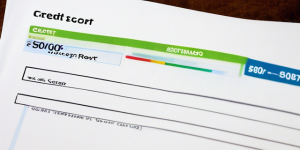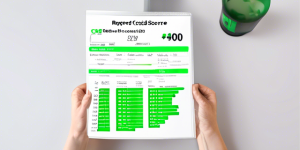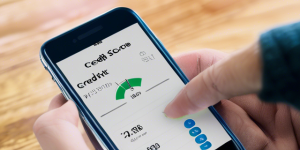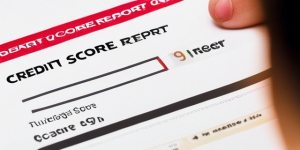
credit score
Bringing up a terrible credit score from the 500s to over 700 takes concentrated effort across multiple improvement areas simultaneously over 6 to 24 months. But with diligent financial rehabilitation – especially addressing root causes behind original score drops – sizable rating gains become obtainable through smart personalized strategies and appropriately prioritizing each area keeping scores down today.
While raising a 500 score over 200 points sounds daunting, having a step-by-step framework with realistic timelines provides the motivation and clarity needed to achieve sizable rating bumps unlocking huge rewards like loan approval odds and ideal interest rates for years ahead thanks to realizing far healthier credit profiles.
Why Raising Credit Scores Matter

credit score
Higher scores unlock better approval odds and cheapest interest rates for credit cards, auto loans, mortgages, and insurance products. Some specifics include:
600 to 650 Scores
- Most credit card and installment loan approvals
- Considered fair/average credit risks
- Card interest rates still exeed 20%+
700+ Scores
- Prime credit card interest rates under 13%
- Easier mortgage and low rate auto approvals
- Demonstrates financial responsibility
- Unlocks very best lending terms over decades
So use major score goals like cracking 700 then 750 as monumental milestones for celebrating because such ratings signal responsibly achieving lifetime money management habits that save thousands in interest costs and enhanced lifestyle comforts from ease accessing affordable credit or financing exactly when desired.
Initial Score Diagnostic Steps
Accurately assessing what factors currently suppress credit scores the most today allows creating effective improvement strategies targeting the biggest problem areas first while concurrently addressing all other facets in a systematic fashion over 6 to 24 months until surpassing score goals set.
Order Full Credit Reports
Secure complete reports from annualcreditreport.com outlining tradelines, debts owed, payments histories, inquiries, collection items and related scoring factors. Identify inaccuracies needing dispute.
Understand 96% of top lenders rely on FICO models over VantageScore.
List All Negative Items
Note every late payment, default, balance owed, with creditor names, amounts, and timeframes. Recent issues drive scores down faster than older items. Segment issues by severity.
Analyze Credit Factors Impacting Scores
FICO scoring breaks down like this:
- Payment History = 35% – Most critical!
- Debt Burden = 30%
- Credit History Length = 15%
- Credit Mix = 10%
- Inquiries + Opening New Credit = 10%
So examine report through this lens to pinpoint suppressing elements carrying the most scoring weight today.
Identify Root Causes Behind Credit Score Drops
Beyond just labeling symptoms like late pays or defaults tied to certain accounts, carefully reflect on root circumstances creating struggles maintaining financial responsibilities.
- Health problems?
- Job loss or instability?
- Family/relationship issues?
- Poor budgeting skills?
- Lack financial knowledge?
Identifying such root causations helps address not just clearing past damaging symptoms but skills/behavior shaping for sustainable money management going forward to prevent reoccurrences.
Key Areas To Start Improving Scores
With detailed diagnostics complete examining full credit histories and the most impactful suppression factors identified from weighting FICO scoring models, next focus improvement efforts simultaneously across these key areas initially while concurrently chipping away at all other facets in systematic fashion:
1. Catch Up On Delinquent Payments
Recent missed or late pays hurt scores the most. Phone credit issuers establishing affordable repayment plans first. Partial payments help too. Automate everything going forward.
Prioritize any debts in danger of charge offs or already sold to collections for payment plans as well to contain damage. The sooner the better.
2. Pay Down Revolving Account Balances
Owed amounts raising credit utilization percentages hurts a lot too. Pay down cards lowering utilization, especially those exceeding 30% balances owed. Highest cards first.
Consider debt consolidation loans or balance transfers to simplify managing just a single affordable payment if existing credit allows.
3. Dispute Incorrect Information
Errors like closed accounts listed open, wrong balances, etc absolutely need fixing immediately via formal dispute letters to credit bureaus. Provide proof of inaccuracies.
Even minor tweaks quickly improve scores until removals finish. Don’t delay disputes especially on serious errors.
4. Limit New Credit Applications
Each application triggers harder inquiries. Avoid new financing until scores improve significantly. Consider adding just an authorized user card periodically to help build positive history.
Too many new accounts appearing in shards hurts until established history lengths season helping buffer newer tradelines. Give 12 months between new apps.
Intermediate Score Building Tactics
Once the previous initial priority steps secure footing addressing the most heavily weighted negative scoring factors suppressing ratings down into 500 ranges, leverage additional intermediate boosting strategies over the next 9 months:
Continually Pay All Bills Early
Building long proven payment responsibility history gives major boosts over time. Set calendar payment reminders for at least 7 to 10 days before actual due dates on all bills.
Never miss installment or revolving payments again – setup autopay whenever possible. If struggling financially, phone credit issuers immediately seeking relief options or hardship programs before missing.
Further Lower Revolving Account Balances
As newly achieved payment consistency helps some, continue deploying extra monthly cash towards reducing existing revolving account balances to under 25% utilization for even quicker points gains.
Request Goodwill Deletions
Formally contact credit issuers associated with any past late payments or other credit missteps requesting account notations get removed given ongoing good standing payments. Highlight longevity.
Further Dispute Any Lingering Inaccuracies
If additional credit history flaws emerge on updated report versions months later, continue rigorously disputing inaccuracies providing validation to bureaus. Points gain fast with fixes.
Only Open New Credit Strategically
Consider periodic requests seeking higher limits on positive existing revolving accounts over pursuing new credit until scores hit very good 600+ levels. Higher limits quickly lower utilization for bigger pops. New accounts may drop scores initially before helping longer term so exercise patience vetting offers.
Cultivate Credit Mix Diversity
FICO scoring models reward varied credit mix like auto loans, mortgages, student loans etc – not just revolving cards. Over 12 to 24 month period strategically blending installment/revolving tradelines improves score diversity for maximum gains.
Advanced Boosting Tactics
With the first 12 months of concentrated financial rehabilitation completed – securing payment histories and lowering utilization ratios – providing strong foundations lifting scores already significantly from 500s into mid-600s, deploy additional advanced tactics cementing excellent practices to keep scoring climbing farther like:
Request Removal Of Hard Inquiries
Since hard credit checks when applying for new accounts stays on reports negatively impacting scores up to 24 months, formally contact lenders associated with approved applications over 12 months old seeking immediate removal given present good standing. This quickly lifts scores higher removing these inquiry dings.
Close Unused Older Cards
Keep positive low utilization accounts open but judiciously close retiring unused cards several years old. The shorter overall credit history length helps offset risks of closing accounts you no longer want/need. Just be sure to pay all cards off completely before closure.
Open New Strategic Accounts
Periodically open new prime credit card in good standing rewarding responsible usage with higher limits, shelf for future score lift options when older accounts eventually close. However, minimize new apps to less than 6 hard inquiries per year.
Explore Credit Monitoring
Signing up for comprehensive credit monitoring gives alerts on report changes, tools disputing errors, plus customized guidance improving scores. Consider sites like freecreditscore.com or myFICO.com for advanced tutorial options lifting scores.
Maintaining Newly Achieved 700+ Scores
With diligent and strategic efforts applied daily across all the above facets over 12 to 24 months, credit turnarounds from 500s to over 700 absolutely happen! After hitting new score peaks finally, be sure embracing lifestyle habits that maintain ratings through:
- Paying bills on time always
- Keeping utilization below 25% monthly
- Further diversifying credit mix long-term
- Only pursuing new credit selectively
- Monitoring scores monthly without obsessing
- Disputing inaccuracies quickly always
Staying focused on such sound personal finance foundations locks in superb credit health for decades supporting family and retirement dreams all while enjoying ultimate approval odds and lowest interest rates!
]]>
Personal Loan, Credit Score
Having a 500 credit score or lower presents obvious challenges when attempting to borrow money from mainstream lenders requiring good creditworthiness. But specialized personal loan programs and alternatives exist helping those with quite poor credit still get access to financing for pressing needs through careful research and persistence.
While certainly limiting compared to those enjoying 700+ FICO ratings that unlock the very best interest rates from anywhere, don’t assume a 500 score makes a personal loan impossible. In fact over a dozen options exist where borrowers with damaged credit profiles may still find approval.
What’s Considered A Very Bad Credit Score

Personal Loan, Credit Score
The most commonly referenced credit scoring model used by the vast majority of lenders is the FICO score ranging 300 to 850. So what’s deemed a “very bad” score that signals high risk of loan default needing remedies before most banks or credit unions will lend money?
- 500 to 579 – Considered very poor and may prevent approval
- 580 to 669 – Still below average but some options exist
So FICO ratings below 580 firmly enter high risk categories across most unsecured lending products like credit cards, auto loans, and online personal loans from traditional providers.
Applicants in 500 to 579 ranges can absolutely still get personal loan money just likely not from mainstream sources. Specialty finance companies going the extra due diligence on such borrowers may provide help.
Why 500 Credit Scores Prevent Approval

Personal Loan, Credit Score
Very bad credit signals historical financial mismanagement to most lending decision makers. Either paying bills late, defaulting on past debts, overusing credit cards, collections and related black marks provide objective reasons why those with 500 FICO ratings struggle getting approved for new money loans.
Specifically such concerning background flags include:
- Maxed out credit cards
- Payday loans still owed
- Unpaid tax liens
- Collections for medical/utility bills
- Repossession of cars/property
- Foreclosure/evictions
- Bankruptcies within past 7 years
- Little real credit history established
This mix of negative indicators means default risks on new unsecured personal loans remain quite high unless thorough vetting and alternative structures provide lenders enough reassurance.
Online Lenders For 500 Credit Score Financing
In years past, consumers with terribly low 500 credit scores had essentially no good options when needing a personal loan whether a few thousand dollars or up to $30,000 and higher. Local bank denials were nearly guaranteed. However the tables turned thanks to specialized online lending networks catering to risky borrowers previously cut off and prone to very pricey payday loans or worse loan sharks.
These online options began recognizing that many people face financial mistakes in life from illnesses, divorces, deaths, or employment issues – and yet still deserve second chances rebuilding credit via carefully managed installment loan structures. While still priced higher accounting for default risks compared to those with 700+ FICO histories, it opened borrowing avenues previously unimaginable.
Names to research specialized in offering personal loans to 500 credit scores include:
The key advantage from such alternative online lenders is using advanced data science and recognition some past money troubles stemmed from unavoidable scenarios now stabilized – which opens doors borrowing money again. Albeit certainly at higher than prime interest rates but far better than outright denials or worse borrowing sources.
Just remember repayments must remain in good standing or risk cutoff from future financing options.
Friends/Family As Personal Loan Option
An often overlooked financing source for those with bad credit: loans from people close to you. Without needing credit checks thanks to personal familiarity and trust, friends or family may provide low or even zero interest small personal loans avoiding outside lender denials and fees.
However, failed repayments also risk permanently damaging vital relationships as money issues breed resentment. So only pursue this extremely private route once less emotional institutional lending routes prove unavailable and be certain the friend/family finances can spare funds lost.
Structured expectations early detailing exact repayment schedules in writing protect both sides. Small claims court remains an option too if unincorporated lending agreements go awry.
Using Collateral To Secure Loans
While traditional unsecured personal loan approvals stay elusive carrying 500 credit scores, consumers do have options like borrowing against or surrendering assets serving as collateral backing the financing until amounts get fully repaid over months/years.
Vehicles, jewelry, stocks, bonds are common assets pledged allowing lenders recourse securing repayment on money lent to applicants with questionable credentials otherwise.
Be warned failure repaying such personal loans means forfeiture of beloved assets surrendered so weight carefully against genuine emergency borrowing needs versus simply nice conveniences possibly losing items of importance or value if budgeting falters.
Among the more extreme collateralized personal loan options also requiring extensive considerations and planning:
401k/Retirement Financing
Tapping IRA/401k plans looking to borrow from yourself while paying relatively low interest can release funds quickly. Just ensure workplace plan rules allow loans and amortization schedules fit realities. Early withdrawal penalties for defaulted loans also means retirement savings take a hit needing many years to recover.
Payday/Title Loans As Emergency Options
With online personal loan provider approvals scarce carrying 500 credit, last resort emergency funding does exist through payday and vehicle title loan sources – albeit both short-term Band-Aids with steep rollover fees eroding eventually to zero principal gains only keeping aggressors at bay.
So pursue these very carefully as temporary reliefs only after all other avenues for improving scores, tapping assistance resources, or adjusting budgets prove thoroughly exhausted first. Interest rates often exceed 400% APR ballooning unmanageably fast plus wreck credit farther. Their speed and non-credit qualifying ease simply can’t outweigh overall contractual risks long run.
Rebuilding & Boosting Scores For Better Rates
Regardless the personal loan option selected ultimately while saddled with awful 500 credit, simultaneously begin diligently addressing root factors keeping scores low interfering with cheaper future borrowing rates from top tier providers once current debts experience on-time resolutions.
- Dispute any inaccuracies with bureaus
- Pay down balances
- Negotiate fixes to current late/missed payments
- Let time lift serious infractions like bankruptcy/foreclosure farther into past
- Signup for credit monitoring alerts
With focused diligence raising scores into mid-600s, 700s unlock much greater personal loan approval chances from lenders offering the very best borrowing rates reserved only for those representing prime low-risk applicant categories thanks to years perfecting financial good standing.
So initially set sights on simply securing some workable personal loan to overcome the present emergency hurdle through higher rate stopgap financiers tolerating 500s. But simultaneously strive elevating credit health cleansing past burdens until ratings where all financing and money borrowing options shine brightly with open doors.
Conclusion
A personal loan with a 500 credit score stays challenging but becomes achievable through persistence and creativity. Seek specialized online networks created exclusively approving higher risk applications. Provide collateral securing lending as added incentive. Earmark wages automatically ensuring comfortable repayments meeting promises.
Most importantly, implement monitoring and money management disciplines preventing recurrence of similar scenarios. In time, blemishes fade and credit rebuilding shifts focus becoming eligible for new lending options at far better interest rates befitting diligent financial profiles.
]]>
Debt Consolidation, Credit Score
Feeling overwhelmed by high-interest credit card balances, medical bills, or other debts? Debt consolidation offers a solution – but at what cost to your credit?
This common relief strategy combines multiple debts into one new consolidated loan with lower monthly payments. Sounds great, right?
However, debt consolidation impacts your credit score in some nuanced ways. Improving scores requires knowing exactly how the changeover affects credit reporting and scoring calculations.
Let’s explore common consolidation techniques, their short and long term influences on credit, plus tips to mitigate risks.
What Is Debt Consolidation?

Debt Consolidation, Credit Score
Debt consolidation simply means replacing multiple individual debts with a new single consolidated loan having one payment at a lower interest rate. This makes repayment more manageable.
Consolidation usually combines credit card balances since cards charge higher interest compared to other lending. However, other eligible debts like medical bills, payday loans, auto loans, or student loans can consolidate too.
There are two main consolidation methods:
Balance transfer cards – Transfer all balances to a new credit card charging 0% introductory interest for 12-21 months
Consolidation loans – Combine all debts into one personal installment loan
Now let’s examine how these strategies influence credit scores based on reporting changes.
How Consolidation Impacts Credit Utilization
The biggest factor driving most credit scores is credit utilization – specifically, the percentage of total available revolving credit actually in use.
For example, having credit card balances totaling $5,000 across cards with a combined $10,000 limit gives 50% utilization.
Scoring models consider utilization exceeding 30% as negative and risky. Keeping it below 10% helps scores the most.
This means debt consolidation improves credit temporarily by lowering your overall utilization.
The Quick Fix of Lower Utilization
Combining $5,000 of card debt onto a new card with a fresh $10,000 limit changes utilization favorably from 50% down to 30% instantly. Nice!
However, score gains from this quick utilization win tend fade once the consolidated balance starts climbing again with ongoing charges.
Still, in the short run, reduced utilization from consolidation boosts scores – which is helpful when applying for mortgages, auto loans, or other major financing.
So consolidation clears some score headroom through utilization, but truly raising credit takes more effort. What else affects the numbers?
The Credit Mix Factor in Scoring
Beyond just utilization, most scoring models also consider your credit mix – the balanced diversity of loan types reported – as a positive.
For example, having both revolving credit card balances plus fixed installment loans like an auto loan improves mix. This signals you capably manage diverse credit types.
However, consolidating debts using a balance transfer card actually worsens your mix temporarily since all debts shift to a revolving account.
On the other hand, taking a consolidation installment loan to pay cards does enhance mix since the new loan is fixed.
So keep the mix impact in mind when choosing a consolidation method.
How Consolidation Closes Old Accounts
Here’s an important revelation about how debt consolidation affects credit scoring – it closes old credit card accounts as balances pay off!
This matters because scoring models consider your longest aged accounts when calculating average account history. Older is better for raising scores.
For instance, say you have 5 credit cards averaging 5 years old, creating a 5 year credit history.
If consolidating debts closes your 10 year old card, history suddenly drops to just 3 years – sinking scores.
The key takeaway? Before consolidating, check if any old accounts close and consider implications to average history age. Leave oldest cards open even if paying to $0!
The VantageScore Scoring Model Differs
Most lenders actually use a score called VantageScore rather than the better-known FICO model. And VantageScore treats closed accounts differently.
Unlike FICO, VantageScore continues factoring paid cards into history averages for 24 months after closure. This reduces hits from consolidating old cards.
However, keeping longevity intact still helps both models long term. Let’s look closer at account history impacts over time.
Monitoring History Changes Long Term
Early on, consolidation improves utilization and credit mix categories for quick score gains. Nice start!
However, as closed accounts fall off reports over the months after consolidation, history lengths start declining. And lower average age gradually suppresses scores.
Say Sam has 4 credit cards averaging 4 years old. He consolidates card debt using a balance transfer card, paying off and closing the other three 4 year old cards.
Initially after consolidating, Sam’s utilization and mix improve, raising his scores. But as his now-closed 4 year cards drop off reports over the next few years, his average history lowers from 4 years towards only reflecting the newer consolidated card.
This slow downward effect means debt consolidation ultimately worsens credit in the long run as closed lengths fall off.
The key takeaways?
Keep old accounts open even if paid off to preserve positive history. And use any early score gains from consolidation strategically for key financing needs.
Best Practices to Minimize Credit Impacts
While consolidation can provide short-term scoring benefits, ensure the long run effect minimizes too by:
Keeping old accounts open – Leave longtime cards open after consolidating even with $0 balances
Monitoring score versions – Check both FICO and VantageScores to detect changes
Using gains strategically – Use early utilization improvements to secure favorable financing rates on must-have loans
Resuming diverse usage long term – Once debts consolidate, begin occasional small spending on old open revolving accounts avoided closure
These steps help optimize scores across consolidation changes.
Considering How Consolidation Affects Debt-to-Income
Beyond credit reports, debt consolidation also changes another key factor lenders review before approving loans – debt-to-income ratio.
Also called DTI, this ratio compares minimum monthly debt payments to your gross monthly income. It measures spare income free for additional borrowing.
Lenders usually require DTI below 50% to qualify borrowers. Excellent ratios fall below 30%.
The math looks like:
Total Minimum Monthly Debt Payments / Gross Monthly Income = Debt-to-Income Ratio
Since consolidation loans reduce total payments through lowered interest rates or extended repayment terms, DTI mathematically declines too.
This DTI improvement positions borrowers to better qualify for mortgages, auto loans and other major needs less than six months after consolidating.
So keep the positive DTI impact in mind too!
Closing Thoughts on Consolidation and Credit
Debt consolidation offers a mix of credit score pros and cons to consider before committing.
The strategy temporarily improves utilization and mix factors while helping debt-to-income ratios. This opens short term financing opportunities if used strategically.
But long term, consolidation can reduce average account history lengths as closed accounts fall off credit reports – gradually lowering scores over time.
Knowing these dynamics allows expecting the score fluctuations and timing major borrowing needs accordingly. Just be sure to keep longtime cards open for history length even if paying to $0 balance through consolidation loans.
While no debt relief route avoids sacrifice, consolidation paired with diligent balance payoff provides workable improvement within the scoring dynamics every consumer faces.
Consolidation and Credit Score FAQs
How much does debt consolidation lower your credit score?
Expect an initial increase, perhaps 30+ points from lowered utilization when first consolidating. Then slow declines of 20-30 points over 1-2 years as closed accounts fall off credit history. These ranges assume on-time payments.
Does consolidating credit card debt hurt your credit?
Temporarily it should help by sharply dropping utilization percentages and mixing up credit types. But if longtime accounts close, average history lengths decline over the next couple years which lowers scores gradually.
Is it better to pay off credit cards or consolidate?
Paying off cards protects more aging history but requires much greater monthly outflow. Consolidating offers lower payments providing cards stay open even if paid off. Finances and willpower determine which path works best.
What happens if you consolidate debt and max out cards again?
Falling back into high card usage after consolidation essentially erases the utilization benefit. It’s critical to change spending habits and use cards minimally after consolidating so scores sustain improvement.
Should I consolidate debt before or after buying a house?
Do it before. The utilization and mix boosts from consolidating and associated debt-to-income improvements will help home loan approval more than waiting. Just be sure to keep old accounts open so history lengths remain intact.
]]>